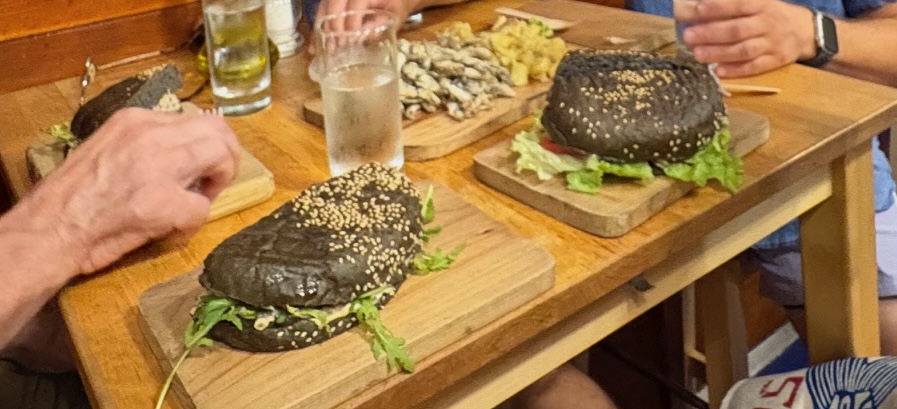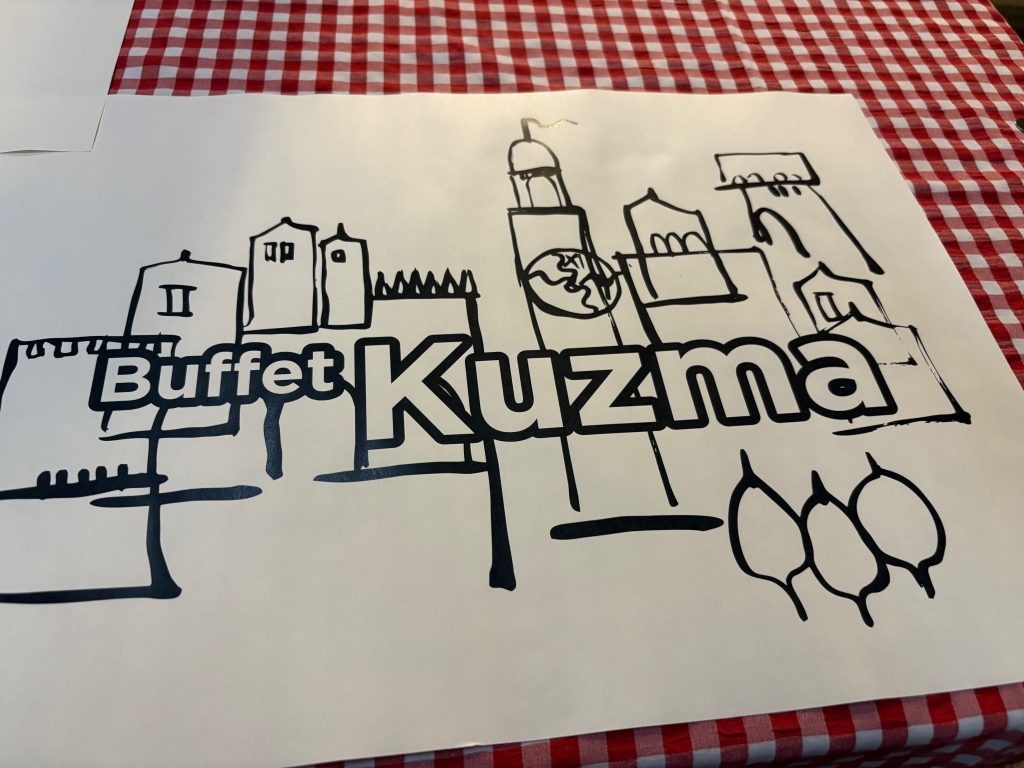Croatian village gets world strudel record. Dubrovnik wins on gastro-nationalism

The excellent and inexpensive family-run Barba seafood restaurant in Dubrovnik. Photos: Rashmee Roshan Lall

Bamboo forks with colourful handwritten notes festoon the walls of the Barba restaurant

Buffet Kuzma is in Dubrovnik’s Old City
News that a Croatian village just achieved (Saturday, September 6) a world strudel record got me reflecting on food in Croatia.
Touristy Dubrovnik, where I’ve just spent days eating heartily (and mostly well), seems a world away (some 550 km actually) from Jaskovo, the new world strudel champion.
Jaskovo, roughly 65 km from the Croatian capital Zagreb, created a line of the famous apple pastry parcels stretching more than three km. That’s a lot of strudel so I hope they were more-ish.
Strudel and the Guinness record aside, how to think of Croatian food?
It has several distinct regional traditions, not least Slavonian, Dalmatian, Illyrian, and Istrian. Each has its own particular flavours and ingredients.
In Dubrovnik, I ate some of the city’s signature dishes. These included Šporki makaruli, a short-pasta version of spaghetti bolognese, albeit with some cinnamon in the meat sauce. Unfortunately, I got my serving of Šporki makaruli at the truly terrible Ginger restaurant in the old town, so I’m unable to say if the dish is generally good or bad.
Then there was the seafood, a Dubrovnik speciality. I ate fried whitebait and a delightful homemade tuna sandwich made with squid-inked bread at the excellent but inexpensive, family-run Barba restaurant. The walls of the restaurant are bedecked with bamboo forks with colourful handwritten notations by happy diners. The staff bring over markers and you’re free to say what you will.
There were other things on offer too in Dubrovnik, which weren’t part of the city’s traditional palate. For instance, Istrian pesto, cevapcici, kulen and strudel.
Each could be said to illustrate the determinedly one-nation nature of the 21st century Croatian plate. Big-plate gastro-nationalism? A celebration of the food of all the regions.
Take the Istrian pesto at the fabulous Poklisar restaurant at Dubrovnik port. Unlike the Italian sauce made with basil, pine nuts, garlic, Parmesan and olive oil, Istrian pesto is a paste of cured pork fat or pancetta, garlic, flat leaf parsley and sea salt. Istrian cuisine is strongly influenced by Venice, the powerful republic that Dubrovnik feared would annex it in the 15th and 16th centuries.
Cevapcici, minced meat ‘skinless sausages’ in the popular telling but more like Turkish kebabs, are the national dish of Bosnia. I had a pretty good version at Buffet Kuzma, a small restaurant on Dubrovnik’s Ulica Marojice Kaboge 6.
I ate kulen, which really is a sausage (unlike cevapcici) and a garlicky one at that, at Poklisar. It was great, even though it’s a dish that’s migrated this far south on the Adriatic coast from Slavonia, the historical name for a part of north-western Croatia.
As for strudel, which enabled that Croatian village to set a world record, I ate three of those in Dubrovnik. The first was in the Old City, a tourist enclave enclosed by centuries-old stone walls. That strudel was a bit of a disappointment. The other two – apple and cherry respectively – were at the rather fun Konoba Dubrava restaurant in the sprawling modern part of Dubrovnik. Those strudels were nice enough but hardly spectacular.
Strudel is not a traditional treat in Dubrovnik and I got the sense that Dubrovnik does strudel in the way Venice does pizza. To keep up with trends and fulfil tourist expectations.
The 13th century health-and-safety ban on wood-fired ovens in Venice kept pizza off the menu until the age of mass tourism. There seems to be no parallel reason (say, safety considerations) for the lack of a deep and abiding strudel tradition in Dubrovnik. And it’s odd, if you think of it, that Dubrovnik hasn’t embraced the strudel more wholeheartedly. After all, strudel is one of Austria’s best-known dishes and Dubrovnik spent a century or so, from 1815, as part of the Austrian, and later, the Austro-Hungarian empire. Might the strudel be a culinary point too far even for Dubrovnik’s big-plate gastro-nationalism? Or perhaps there’s a mundane reason – that Dubrovnik just hasn’t learnt to make strudel to standard?





